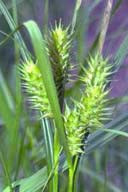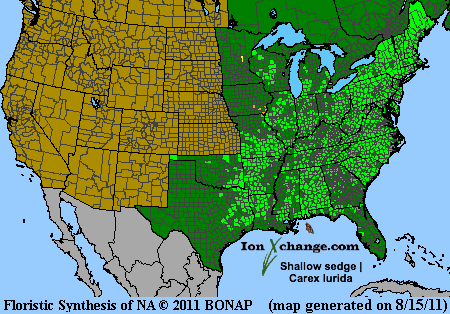 Loading... Please wait...
Loading... Please wait...- Home
- SEEDS
- SEED MIXES
- BUY PLANTS
- Info Request
-
Educational Videos
- Greenhouse Transplanting Demonstration
- Native Seed Cleaning demonstration at Ion Exchange Native Seed and Plant Nursery
- Attracting Butterflies
- Bidens - Bidens cernua Harvest Video
- Big Blue Stem Harvest
- Butterfly Milkweed Video
- Button Blazingstar - Liatris aspera Video
- Buttonbush - Cephalanthus occidentalis Video
- Canada Anemone - Anemone canadensis Harvest Video
- Cardinal Flower - Lobelia cardinalis Video
- Control Burn - Wildflower Field
- Cream Gentian - Gentiana flavida
- Culver's Root - Veronicastrum virginicum Video
- Cup Plant - Silphium perfoliatum Video
- Dormant Seeding | Planting
- Earthyman's Favorite Wildflowers Video
- Eco-Friendly Golf Course Seed Mix
- Floating Islands
- Fringed Loosestrife - Lysimachia ciliata Video
- Giant Yellow Hyssop - Agastache nepetoides Video
- Indiangrass - Sorghastrum nutans Video
- Iowa Prairie Partner Program
- Leadplant - Amorpha canescens (Potted) Video
- Meadow Blazingstar - Liatris ligulistylis
- Midland Shooting Stars - Dodecatheon meadii Video
- Native Plant Nursery Field Irrigation Experiment
- Nodding Onion - Allium cernuum Video
- Ohio spiderwort - Tradescantia ohiensis Video
- Old Man's Beard - Clematis virginiana blooms Video
- Oxeye Sunflower - Heliopsis helianthoides Video
- Prairie Spiderwort - Tradescantia bracteata
- Purple Coneflower - Echinacea purpurea Video
- Rain Garden or Water Garden Video
- Rattlesnake Master - Eryngium yuccifolium Video
- Riverbank Stabilization - Wetland Plants
- Rose Mallow - Hibiscus militaris Video
- Rosinweed - Silphium integrifolium Video
- Royal Catchfly - Silene regia
- Showy Tick Trefoil - Desmodium canadense Video
- Sneezeweed - Helenium autumnale Video
- Swamp Betony - Pedicularis lanceolata Video
- Swamp Milkweed - Asclepias incarnata Video
- Sweet Blackeyed Susan - Rudbeckia subtomentosa Video
- Tall Coreopsis - Coreopsis tripteris Video
- Urban Butterfly Garden
- Wild Bergamot - Monarda fistulosa Video
- Wild Geranium - Geranium maculatum Harvest
- Wild Goldenglow - Rudbeckia lanciniata Video
- Wild Petunia - Ruellia humilis Harvest Video
- Woodland Knotweed - Polygonum virginianum Video
- Yellow Coneflower - Ratibida pinnata Video
- Blog
- Resources
- Policies
Contact Us
Phone:
563-419-0837
or 563-535-7231
Email:
hbright@ionXchange.com
Browse Products
Add to Wish List
You Recently Viewed...
Our Newsletter
Product Description
This native perennial sedge forms a tuft of basal leaves and one or more culms up to 2½' long. Each culm is stiff, 3-angled, glabrous, and unbranched; its edges are rough underneath the inflorescence. Along the lower half of each culm, there are 1-3 alternate leaves that are ascending to widely spreading. The blades of these leaves are up to 12" long and 7 mm. across; they are light to medium green, glabrous, channeled along their midribs, and rough-textured along their margins. The outer leaf sheaths are light to medium green and glabrous, while the inner sheath is membranous and truncate to slightly concave at the mouth.
| Sun Exposure | Prairie, Savanna, Woodland |
| Soil Moisture | Wet, Wet Mesic |
| Bloom Time |
|
| Bloom Color | |
| Max Height | 3 feet |
| Wetland Code | OBL |
| Germ Code | C(60) |
| Seeds Per Ounce | 12,000 |
Lurid Sedge (Carex Lurida) native perennial sedge forms a tuft of basal leaves and one or more culms up to 2
Pennsylvania sedge is a low, clumped, grass-like perennial, 6-12 in. high, with a cluster of brown seed capsules clinging high on the stem. Foliage is pale-green in spring and summer, turning sandy-tan in fall.
Rhizomatous turf-forming with pale-green arching leaves forms ground cover in forests or savannahs (oak/pine or sugar maple) prefers light-textured soils. Resistant to deer grazing.
Edible Uses: Unknown
Medicinal Uses: Unknown
Herbal Uses: Unknown












